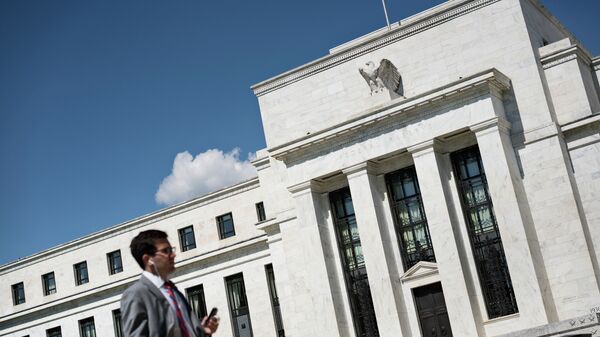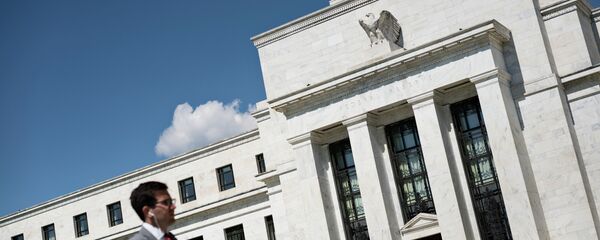Kristian Rouz – The pace of US economic expansion is gaining momentum in the current quarter, even though manufacturing figures are disappointing thus far with business spending having weakened in April.
Nonetheless, initial unemployment claims dropped in mid-May, suggesting the labor market is persistently solid, while pending home sales rose to their highest since early 2006 in April.
However, international factors, particularly the China card, would likely play a major role in Fed decision-making in the near-term.
Orders for US capital goods, particularly business equipment, continued their decline for a third consecutive month in April, according to a report released by the US Department of Commerce on Thursday. The data is an indication of an ongoing contraction in US manufacturing, hit by the dollar’s strength and domination of imported goods in the domestic market.
The figures have shown orders for non-defense goods excluding aircraft (Core Durable Goods Orders) dropped 0.8% month-on-month (6.7% annualized). Even though the overall contraction in US business orders has only lasted three months straight, the main indicator, Core Durable Goods, has been shrinking for 15 out of the past 18 months, figures show. Military spending gained 3.7%, while non-military aircraft (i.e. Boeing) skyrocketed by 64.9%.
Shipments of Core Durable Goods added 0.3% in April, a rebound from the previous month’s decline. The broadest capital goods measure, including military orders, added 3.4% compared to 1.9% gains in March. Driven by gains in military spending, US business activity is thus becoming increasingly dependent on the allocation of government funds.
"Overall domestic growth momentum appears to be on the mend. Nevertheless, the weak performance in business capital investment activity suggests that this segment remains a source of drag for the US economic recovery," Millan Mulraine of New York-based TD Securities said.
Meanwhile, the US labor market has proven resilient, as after a spike in initial unemployment in early May, the jobless rate fell in the week which ended on May 21. Initial jobless applications slid 10,000 that week to 268,000, according to a Labor Department report. The news, which is more optimistic than previous expectations, would provide a boost to consumer confidence, providing a slightly brighter outlook on overall US growth in 2Q16.
Jobless applications are “trending very, very low – not a whole lot of job destruction out there,” Scott Brown of St. Petersburg, FL-based Raymond James Financial Inc. said. “The job market is still doing really, really well.”
Many families would prefer a preowned home as prices in this segment are lower, while borrowing costs are still loose.
Previous estimates suggested a 0.6% increase in the NAR index. Meanwhile, an annualized measure of pre-owned home sales rose 4.6%, with solid gains in sales on the West Coast and in the South, while the Midwest reported a decline, in a similar fashion to the new home sales situation.
However, a pickup in 2Q16 economic expansion is expected to be moderate at best, while for the rest of the year the situation remains murky, given the ongoing carnage in US corporate profits. The industrial production situation is alarming as well, meaning the latest developments are not an indication the US economy will definitely avoid a recession that is still a realistic possibility for late 2016-mid 2017.
“The global growth picture is still unsettled. Corporate profits have softened as well. Investment is likely to stay tepid for some time, and it’s not a good signal for the second half of the year,” Thomas Costerg of New York-based Standard Chartered Bank said.



